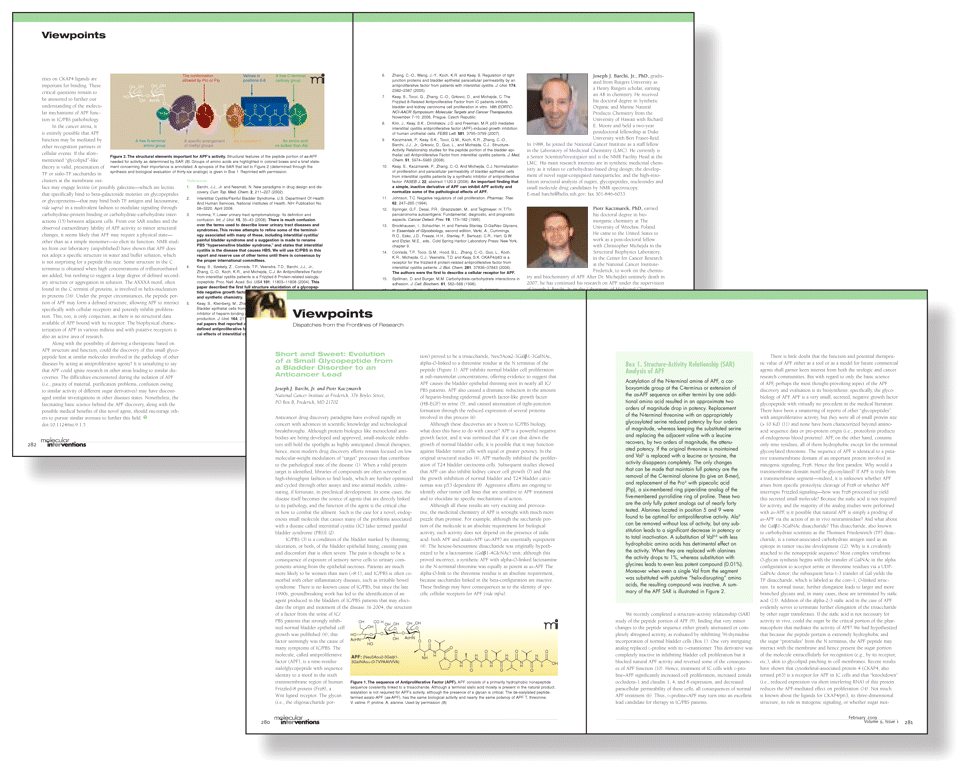Letters from Our Readers
Dear MI
Our Viewpoint article (“Short and Sweet:….”) in the February 2009 issue of Molecular Interventions describes a truly fascinating story of the small glycopeptide that acts as a negative regulator of cell growth in a chronic bladder disorder. We began this short manuscript by recounting the discovery of this so-called antiproliferative factor (APF) and then concentrated on the details that had come to light just before and since the elucidation of the structure of the factor in 2004 (Proc. Natl. Acad. Sci. U.S.A. 101, 11803–11808).
Whenever an interesting conundrum is finally solved, such as the chemical structure of a biological moiety, it is natural for the scientific community to take closer notice, and now that a structure can be matched with a function, inhibitor design and molecular mimicry for potential drug discovery can move forward more rapidly. However, identification of the structure of APF would not have been possible without much outstanding work, including experiments to identify part of the structure of APF, that came from a group of researchers working at the University of Maryland and the Veterans Administration in Baltimore, MD.
This group, led by Dr. Susan Keay, published a series of papers describing the initial discovery and subsequent definition of much of the biology of APF between the years of 1996–2004. Upon further reflection, we, the authors of the Viewpoint, feel that more emphasis should have been placed on some of these studies in the introductory paragraphs of our article, because these seminal works culminating from the determined efforts of the Keay group, as well as their participation in APF structural studies, led to the eventual identification of the molecular composition of APF in a fruitful collaboration with some of us in the Laboratory of Medicinal Chemistry (National Cancer Institute–Frederick).

We believe the readers of our Viewpoint article would, therefore, be better served by our acknowledgment of additional articles not cited by us (but cited below) that provide further details of the characterization of APF. We cannot emphasize enough how much has been learned from the ongoing contibutions of the Keay group. Collaboration with that group has led to some critical breakthroughs in the science behind APF and, we hope, future development of beneficial therapies based on APF based on our collaborative research.
Sincerely,
Joe Barchi
Piotr Kaczmarek
National Cancer Institute Frederick, 376 Boyles Street, PO Box B, Frederick, MD 21702, E-mailbarchi{at}helix.nih.gov; fax 301-846-6033
- Copyright © 2009



